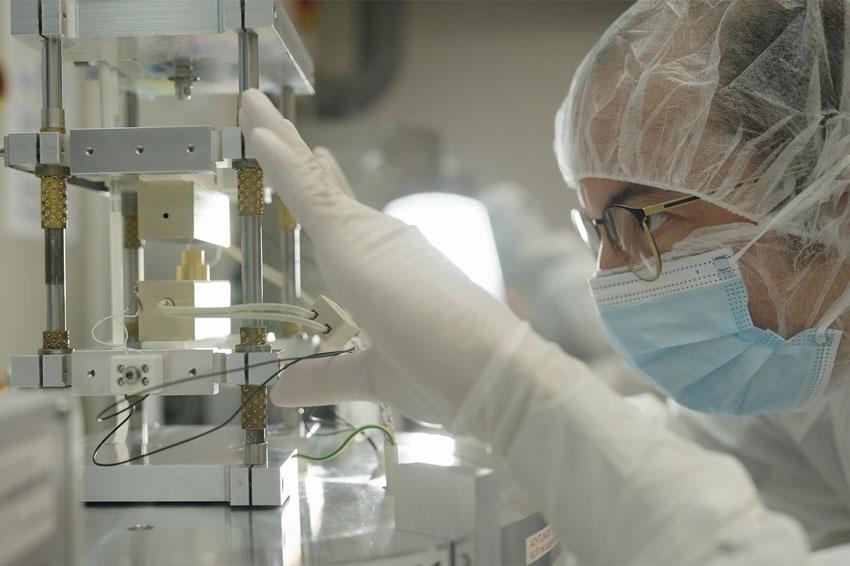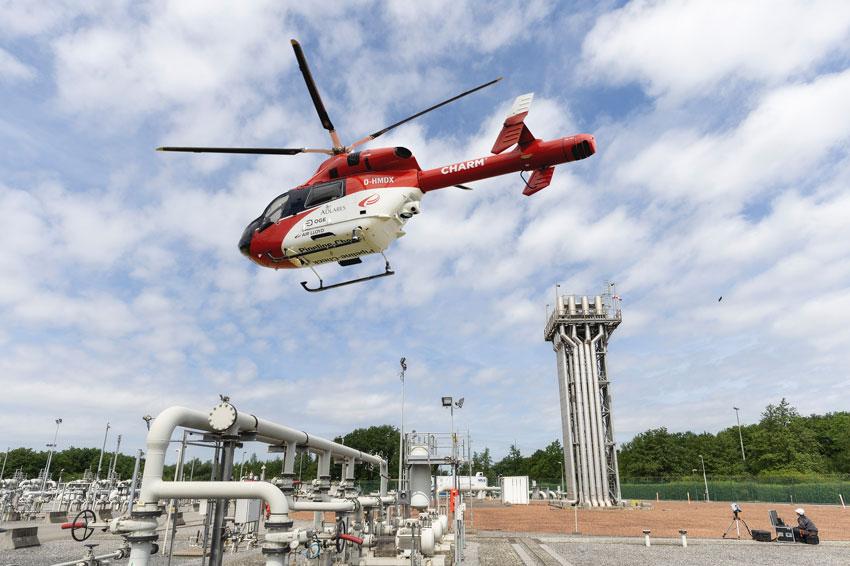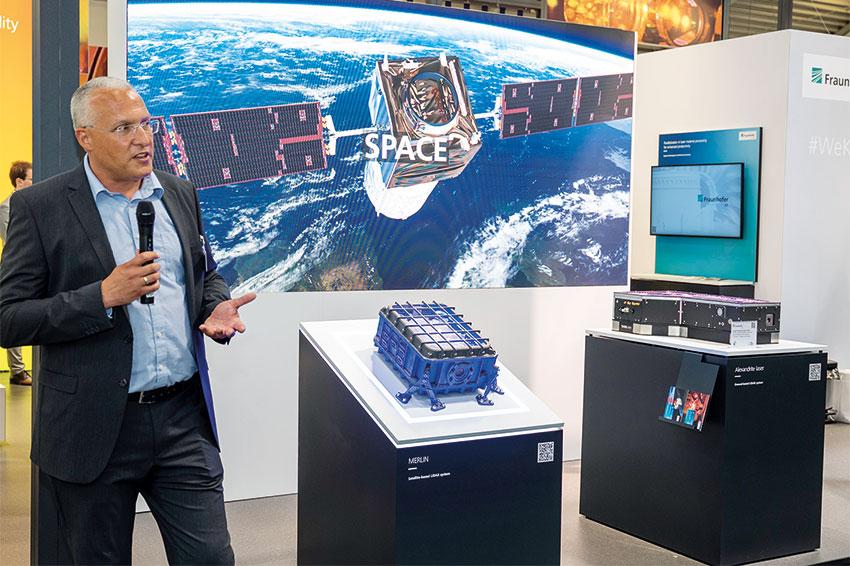Tracking greenhouse gases with a laser
Fraunhofer ILT researchers develop advanced lidar systems to tackle global methane emissions and improve climate monitoring
The uncontrolled emission of methane during the extraction, production, transportation or processing of fossil fuels accounts for eleven percent of greenhouse gas emissions worldwide, according to the German Association of Energy and Water Industries. Eighty percent of methane emissions, on the other hand, can be attributed to agriculture and waste management. According to the International Energy Agency (IEA), 1.7 percent of the gas produced worldwide is lost through leaks. The Energy Watch Group calculates this at over four percent, while other experts provide even higher figures.
It is therefore important to precisely record and monitor the concentration of greenhouse gases in the atmosphere. Until now, methane has only been measured passively from space, i.e. via the sunlight absorbed in the atmosphere by this gas. The concentration can then be calculated from the absorption. However, this method only works during the day and its accuracy is limited.
A light detection and ranging (lidar) system, however, can determine the methane concentration directly. This uses lasers with two wavelengths at around 1,645 nm to make the measurement independent of external factors such as the strongly fluctuating reflectivity of the earth’s surface. It measures the light absorption of the atmosphere at wavelengths of maximum and minimum methane absorption. The methane concentration in the air column in the measurement path is calculated by comparing the measured values.
Fraunhofer ILT has the laser at the core of the lidar system. Read the details in a new article in PhotonicsViews (in print) now online as an early view contribution.
Reference: Tracking greenhouse gases with a laser – Fraunhofer ILT researchers develop advanced lidar systems to tackle global methane emissions and improve climate monitoring, PhotonicsViews 21(4), in print, first published online: 25 June 2024








